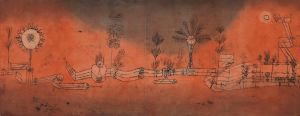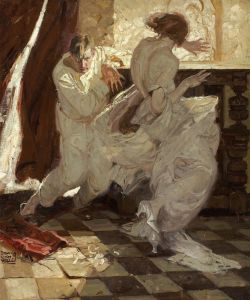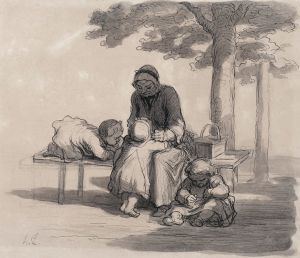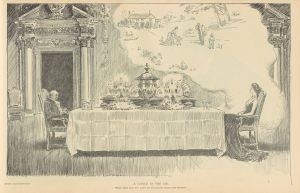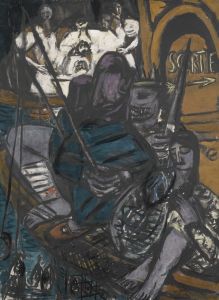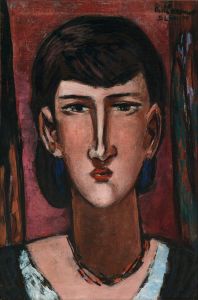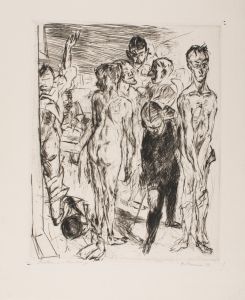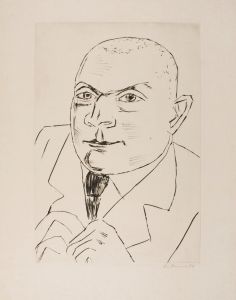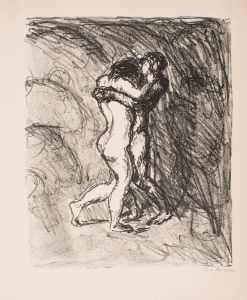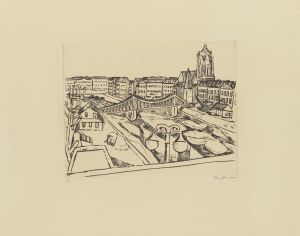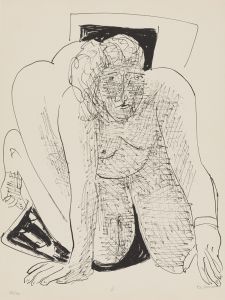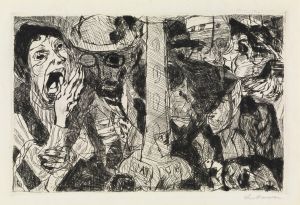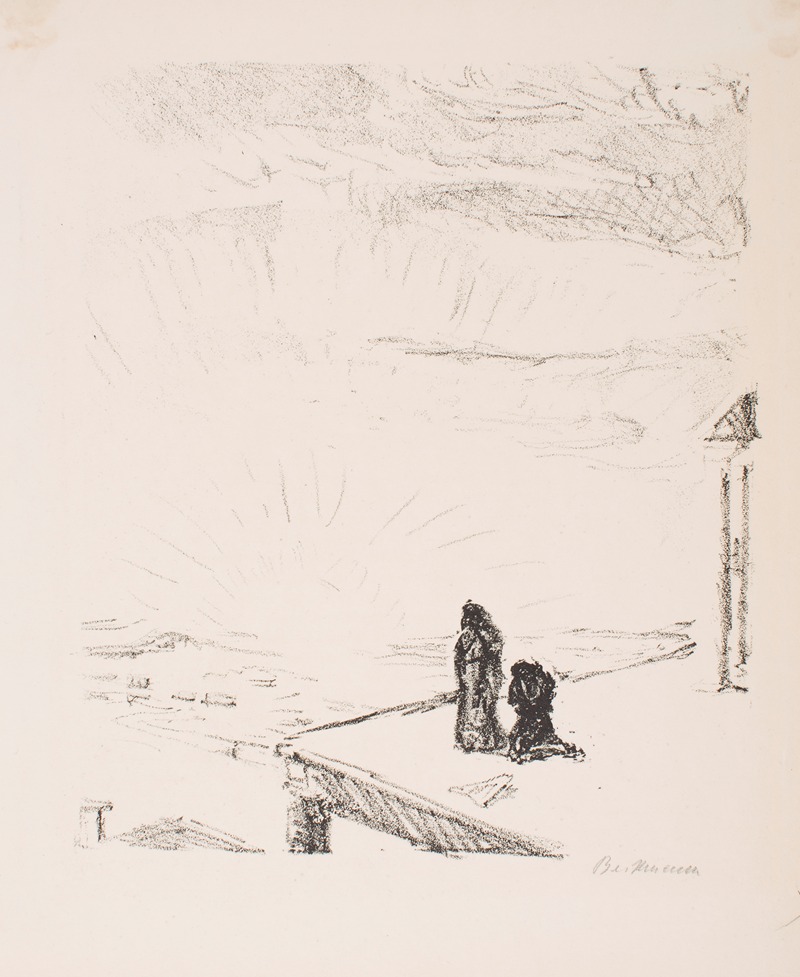
Conclusion, Plate 9 from the series ‘The Return of Eurydice, Three Cantos’
A hand-painted replica of Max Beckmann’s masterpiece Conclusion, Plate 9 from the series ‘The Return of Eurydice, Three Cantos’, meticulously crafted by professional artists to capture the true essence of the original. Each piece is created with museum-quality canvas and rare mineral pigments, carefully painted by experienced artists with delicate brushstrokes and rich, layered colors to perfectly recreate the texture of the original artwork. Unlike machine-printed reproductions, this hand-painted version brings the painting to life, infused with the artist’s emotions and skill in every stroke. Whether for personal collection or home decoration, it instantly elevates the artistic atmosphere of any space.
Max Beckmann, a German painter, draftsman, printmaker, and writer, is recognized as one of the most significant artists of the 20th century. His work is often associated with the New Objectivity movement, which emerged in Germany in the aftermath of World War I. Beckmann's art is known for its expressive style and complex symbolism, often reflecting the tumultuous socio-political landscape of his time.
"Conclusion, Plate 9 from the series ‘The Return of Eurydice, Three Cantos’" is one of Beckmann's notable works. This piece is part of a series that explores the mythological story of Orpheus and Eurydice, a popular subject in art and literature. The myth tells the tale of Orpheus, a legendary musician, who ventures into the underworld to retrieve his beloved wife, Eurydice, only to lose her again due to a moment of doubt.
Beckmann's interpretation of this myth is rendered in his distinctive style, characterized by bold lines, dramatic contrasts, and a deep exploration of human emotion and existential themes. The series "The Return of Eurydice, Three Cantos" is a reflection of Beckmann's interest in mythological and allegorical subjects, which he used as a means to explore the human condition and the complexities of life and death.
In "Conclusion, Plate 9," Beckmann captures the poignant moment of the myth's resolution. While specific details of the composition are not widely documented, Beckmann's work often features a rich interplay of figures and space, creating a dynamic narrative that invites viewers to engage with the underlying themes. His use of symbolism and allegory in this series is typical of his broader oeuvre, where he frequently employed mythological references to comment on contemporary issues and personal experiences.
Beckmann's art was significantly influenced by the historical context in which he lived. Having experienced the horrors of World War I and the rise of Nazism in Germany, his work often reflects a sense of disillusionment and a search for meaning in a chaotic world. This existential inquiry is evident in "The Return of Eurydice, Three Cantos," where the mythological narrative serves as a vehicle for exploring themes of love, loss, and the human struggle against fate.
The series, including "Conclusion, Plate 9," is an example of Beckmann's mastery of printmaking, a medium he used extensively throughout his career. His prints are noted for their technical precision and ability to convey complex narratives through a limited palette and intricate line work.
Max Beckmann's contribution to modern art is widely recognized, and his works are held in major collections around the world. "Conclusion, Plate 9 from the series ‘The Return of Eurydice, Three Cantos’" exemplifies his ability to blend mythological themes with contemporary concerns, creating art that resonates with universal human experiences. Through this work, Beckmann invites viewers to reflect on the enduring power of myth and its relevance to the human condition.






